Chameleon People - [4]
‘You were the only person in the world I hoped might believe me,’ he stammered in a quiet voice.
Then he seemed to lose both his voice and interest again. He had nothing more to say about the case. All the questions he was asked later that evening remained unanswered, including any about his name. And he shook his head feebly when asked if he would like a lawyer or to contact his family.
The suspect’s identity was not confirmed that first evening. It was perfectly clear that he came from a very different background from the multi-millionaire Per Johan Fredriksen. But where the mysterious boy actually came from was not established. He did not say a single word more and no one called in to say that their teenage son was missing.
Once the arrestee had been locked up in a cell, I stood for a couple of minutes and looked at the red Coop bike, marked ‘Item of Evidence 2’. The bicycle, like its owner, was not a particularly impressive sight. Several spokes were broken, the seat was loose and the tyres were worn down. If I had a teenage son, I would certainly not let him out on the streets of Oslo on such a rickety old thing.
One could hardly expect a murderer to have ID with him. But my curiosity regarding the boy’s name, background and motive was further piqued by the fact that he did not have so much as a penny in his pocket, or anything else other than a bloody kitchen knife.
I called my boss, and was immediately given the necessary authorization to continue investigating the case. He expressed his relief that the culprit had already been caught.
I wrote a press release to confirm that the politician Per Johan Fredriksen had been stabbed and killed on the street, and that the case was as good as solved now, following the arrest of a young man with a knife who had fled the scene of the crime. I chose to say ‘as good as’ as something felt awry, but for want of more information, I could not put my finger on what exactly it was.
At a quarter to eleven, I ventured back out into the night. I took with me the young suspect’s puzzling statement that I was the only one in the world he hoped might believe him.
I was at home in my flat again by five past eleven. I got hold of Miriam, thanks to the newly installed telephone at the student halls of residence, and quickly updated her on my unexpected visitor. She was naturally very curious and asked about the boy on the bicycle, but did not know him either. For a moment it almost sounded as though she regretted going to the demonstration, as it meant that she had missed the evening’s drama.
‘That does not sound good for the poor young boy. And his explanation “when I went back” is linguistically rather odd, as well,’ she remarked pensively.
It was by no means the first time I had heard Miriam comment on a linguistic detail. This time, however, I understood what she meant, and was immediately interested.
The young arrestee’s use of the word ‘back’ meant that he had, in fact, left the spot after an earlier meeting with Fredriksen, only to then return and find the body. There was nothing at present to disprove that this was what had happened, and that he had then taken the knife with him in his confusion when he left the scene of the crime. If this was the case and Fredriksen had passed the young cyclist there and carried on, then it was odd that, only minutes later, he was lying in almost precisely the same place.
I wished Miriam a good night and put down the phone, then stood there deep in thought, my hand still on the receiver.
I had remembered by heart the number of the telephone on the desk of Patricia Louise I. E. Borchmann, my invaluable advisor. I seriously considered ringing to tell her about what had happened, but then decided that it was a little too late in the evening and the case was more or less concluded.
But underlying this was also the fear of how she might react if I called. At the end of our third murder investigation together in the summer of 1970, the drama of Miriam’s near-death experience had coincided most unfortunately with the death of Patricia’s father. She had only helped me by phone during my fourth murder investigation, and we had met a few times in the course of my fifth and sixth investigations over Christmas 1971. As I understood it, Patricia had then hoped to hear very different news about my relationship with Miriam, and certainly not the announcement of our engagement on New Year’s Eve. I had not spoken to Patricia since then.
The uncertainty as to where Patricia and I now stood had hung over my otherwise charmed existence like a dark cloud. But a situation had not yet arisen that made it necessary to find out – I had had no good reason to contact her again.
However, now that a good reason had, quite literally, come knocking at my door, I chose to delay the matter. I still felt not only deeply uncertain, but also alarmed at the thought of what Patricia’s reaction might be. I could not imagine that she would in any way wish to be more public about anything. But it had struck me more than once that the consequences for my career would be catastrophic, should anything unintentionally provoke Patricia to say just how much I had told her about my murder cases, and the extent to which she was responsible for solving them.
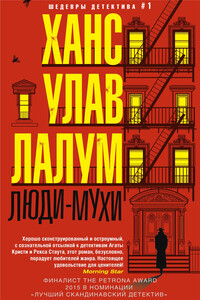
Убит бывший лидер норвежского Сопротивления и бывший член кабинета министров Харальд Олесен. Его тело обнаружено в запертой квартире, следов взлома нет, орудие убийства отсутствует. На звук выстрела к двери Олесена сбежались все соседи, но никого не увидели. Инспектор уголовного розыска Колбьёрн Кристиансен считает, что убийство, скорее всего, совершил кто-то из них. Более того, он полагает, что их показания лживы.
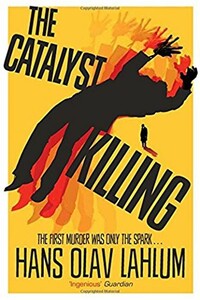
The third mystery in the hugely compelling, bestselling international crime series from Norway's answer to Agatha Christie, Hans Olav Lahlum, The Catalyst Killing will have you guessing to the final clue. The first murder was only the spark… 1970: Inspector Kolbjorn Kristiansen, known as K2, witnesses a young woman desperately trying to board a train only to have the doors close before her face. The next time he sees her, she is dead… As K2 investigates, with the help of his precocious young assistant Patricia, he discovers that the story behind Marie Morgenstierne's murder really began two years ago, when a group of politically active young people set out on a walking tour in the mountains.
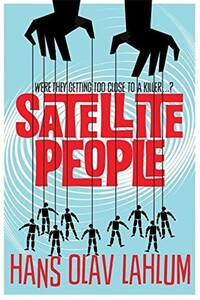
A gripping, evocative, and ingenious mystery which pays homage to Agatha Christie, Satellite People is the second Norwegian mystery in Hans Olav Lahlum's series. Oslo, 1969: When a wealthy man collapses and dies during a dinner party, Norwegian Police Inspector Kolbjorn Kristiansen, known as K2, is left shaken. For the victim, Magdalon Schelderup, a multimillionaire businessman and former resistance fighter, had contacted him only the day before, fearing for his life. It soon becomes clear that every one of Schelderup's 10 dinner guests is a suspect in the case.
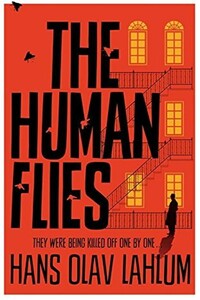
Oslo, 1968: ambitious young detective Inspector Kolbjorn Kristiansen is called to an apartment block, where a man has been found murdered. The victim, Harald Olesen, was a legendary hero of the Resistance during the Nazi occupation, and at first it is difficult to imagine who could have wanted him dead. But as Detective Inspector Kolbjorn Kristiansen (known as K2) begins to investigate, it seems clear that the murderer could only be one of Olesen's fellow tenants in the building. Soon, with the help of Patricia – a brilliant young woman confined to a wheelchair following a terrible accident – K2 will begin to untangle the web of lies surrounding Olesen's neighbors; each of whom, it seems, had their own reasons for wanting Olesen dead.
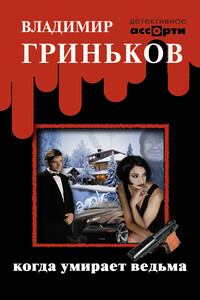
Новый роман Владимира Гринькова «Когда умирает ведьма» увлекает необычным колдовским сюжетом. Однако мистики в нем не больше, чем в жизни самых обычных людей. Девушка, которая делает все возможное и невозможное, чтобы получить высокооплачиваемую работу, частный детектив, богатый бизнесмен, журналист, специализирующийся на скандальной хронике, деревенская бабка-знахарка — судьбы героев причудливо переплетаются с тем, чтобы сложиться в единственную и неповторимую картину, предопределенную загадочной Судьбой.
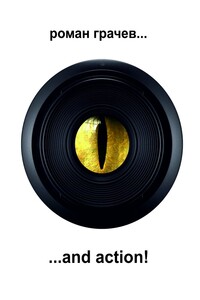
Молодой и дерзкий журналист Виктор Вавилов, главный редактор глянцевого журнала, находится на грани нервного срыва. Кредитор требует срочного возврата долга, угрожая физической расправой; любимая жена, кажется, собирается подать на развод; подчиненные на работе явно не готовы выполнять поставленные задачи. Все меняется, когда в руки Виктора попадает видеокамера его друга, телевизионного оператора. Нужно просто нажать кнопку «rec» — и все будет… хорошо?
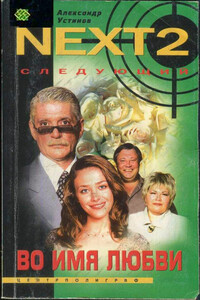
Книга написана по сценарию известного российского драматурга А.В. Тимма.Шайка Ангелины Виннер продолжает борьбу. Им удается похитить Ольгу Кирсанову, жену убитого хозяина «Империи». Сын Ольги Ваня ради спасения матери отказывается от своих прав на фирму. Враждебный лагерь празднует победу, но… преждевременно! В руках у Лавра козырная карта — завещание, и, обнародовав его, он ломает планы своих врагов. Остановятся ли бандиты, или кто-то снова окажется их следующей жертвой?
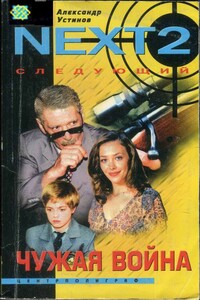
Книга написана по сценарию известного российского драматурга А.В. Тимма.Франц Хартман и Ангелина Виннер, подстроившие автокатастрофу, в которой погиб хозяин «Империи» Владимир Кирсанов, намерены идти до конца. Теперь они замышляют убийство его жены Ольги и несовершеннолетнего сына Вани, наследника «трона». Волею случая Лавру суждено сыграть роль доброго ангела в судьбе женщины и ребенка.

Обстоятельный и дотошный инспектор амстердамской полиции Ван дер Вальк расследует странное убийство домохозяйки («Ать-два!»). Героям известного автора детективов предстоят жестокие испытания, прежде чем справедливость восторжествует.
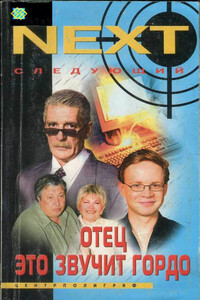
Книга написана по сценарию известного российского драматурга А.В. Тимма. На страницах романа вы встретитесь со старыми знакомыми, полюбившимися вам по сериалу «NEXT», — благородным и великодушным Лавром, его сыном Федором, добродушным весельчаком Санчо и решительной Клавдией. Увлекательное повествование вводит в мир героев, полный настоящих рыцарских подвигов и романтических приключений.